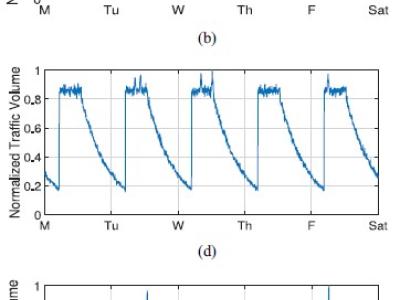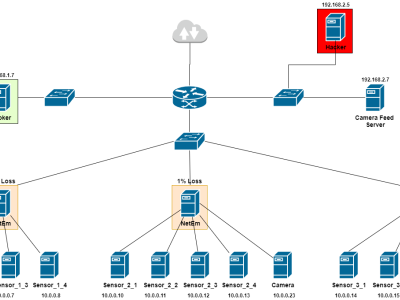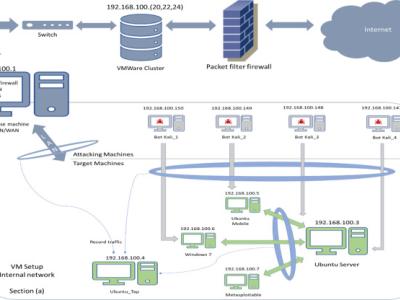IoT Time-Series Traffic Data: Smart City, eHealth, and Smart Factory

- Citation Author(s):
-
Dana Hajhussein (Carleton University)Mohamed Ibnkahla (Carleton University)
- Submitted by:
- dana Hajhussein
- Last updated:
- DOI:
- 10.21227/5hyq-sw82
- Research Article Link:
 929 views
929 views
- Categories:
- Keywords:
Abstract
This dataset provides realistic Internet of Things (IoT) traffic time-series data generated using the novel Tiered Markov-Modulated Stochastic Process (TMMSP) framework. The dataset captures the unique temporal dynamics and stochastic characteristics of three distinct IoT applications: smart city, eHealth, and smart factory systems. Each application's traffic pattern reflects real-world behaviors including human-machine correlation (HMC), sudden data bursts, and application-specific seasonality patterns.
The traffic data is presented as time-series with 1-minute resolution over multiple days, incorporating:
- Daily traffic volume fluctuations reflecting human activity patterns
- Application-specific coordinated transmission phases resulting in data bursts
- Varying traffic intensities based on application characteristics
- Temporal correlation between IoT nodes
- Realistic traffic behavior validated against real IoT application traces
This dataset is particularly valuable for:
- Evaluating resource allocation algorithms for edge/cloud computing
- Testing traffic prediction models
- Analyzing application-specific IoT network behaviors
- Developing and validating network slicing strategies
- Studying autonomous resource scaling mechanisms
The dataset has been validated through comparison with real IoT traffic patterns and demonstrated utility in evaluating autonomous edge slicing (AES) mechanisms. The included traffic patterns exhibit different human-machine correlations and burst frequencies that match expected behaviors of real-world IoT deployments.
Instructions:
The dataset consists of three MATLAB files:
Smart_City_Traffic.mateHealth_Traffic.matSmart_Factory_Traffic.mat
File Content
Each file contains time-series traffic data for its respective IoT application with the following specifications:
- Time Resolution: 1-minute intervals
- Duration: 5 consecutive days
- Start Time: 12:00 AM (midnight) of Day 1
- Measurement Unit: Number of packets per minute
Data Conversion
The packet counts can be converted to traffic volume (MB) by:
- Assigning MB packet sizes according to desired distribution
- Sum assigned sizes of packet count
Model Parameters
The mathematical parameters used to generate this dataset are detailed in the paper: "A Novel Mathematical Framework for Modeling Application-Specific IoT Traffic" (IEEE Internet of Things Journal, 2024)
Additional Support
For assistance or custom IoT traffic time-series data requests, please contact the authors:
- Dana Haj Hussein (dana.hajhussein@carleton.ca)







